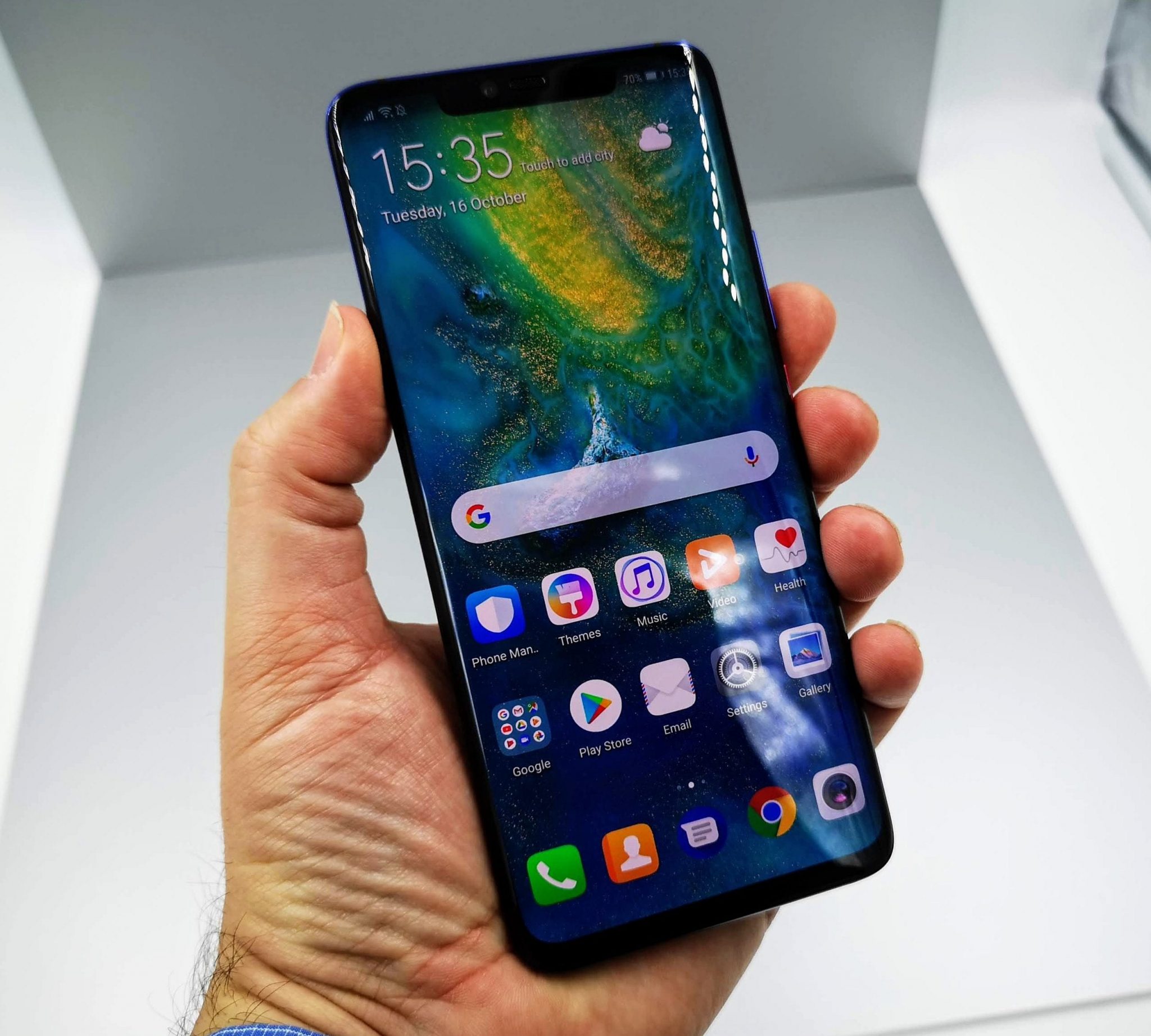
Hands-on with the new Huawei Mate 20 Pro and the Huawei Watch GT
So many new phones end up being evolutionary than revolutionary, that it becomes a welcome surprise when a company brings something new to the table. In the case of the Mate 20 Pro, Huawei has brought a whole new table.
It wasn’t that long ago that Huawei revealed its new Kirin 980 chipset at IFA in Berlin, and the Mate 20 Pro is the first phone (alongside the ordinary Mate 20) to utilise it. At the pre-launch briefing, Huawei was keen to brag that it always starts and ends each year with the most powerful chipset on the market.
Before we got to see the new Mate 20 Pro (the ‘standard’ Mate 20, like last year’s Mate 10, won’t be making an appearance in the UK – although there is the Mate 20 Lite on sale already), Huawei took time to tell us that almost 15% of its revenue is now reinvested back into research and development, to keep pushing the boundaries of mobile technology.
A lot of that investment is going into 5G (by the end of 2018, it will have spent $1bn) but also a lot of the money goes into its handsets.
Huawei has now overtaken Apple to become the second largest shippers of devices, and it has its sights firmly set on Samsung to become number one.
With the excellent P20 Pro released earlier this year, and now the Mate 20 Pro, it thinks it has the tools to continue to grow.
But, what of the phone itself? That’s what you want to know about, right?
The Mate line is a handset range that promotes flagship features, and AI has increasingly become a part of that. The Kirin 980 chipset introduces two neural processing units (NPUs), which doesn’t just mean faster speeds but all-new functionality. AI gives the phone an opportunity to better learn and understand you, predicting what you want to do with the phone at any given moment.
This can allow for better app management and power management, although when it comes to power management, Huawei is a company that doesn’t merely cut power consumption and then wipe out the benefits by fitting a smaller battery. In the Mate 20 Pro, Huawei has increased the battery capacity to 4200mAh, so you’ll hopefully get better battery life – not merely achieve the same sort of standby and screen-on-time as with the earlier model.
Fast charging is key to any large battery, and the Mate 20 Pro now has 40W Super Charge technology that gets the battery from 0% to 70% in just 30 minutes. Huawei points out that a larger battery can be charged quicker, due to the chemistry of a battery and the need to slow charging when almost full. By having more battery cells, the battery can charge at full power for longer.
Like earlier models, the Mate 20 Pro is safety certified which should allay fears of battery explosions and fires.

Camera
Flip over the phone and you’ll see a somewhat odd looking square camera arrangement, albeit with curved edges that match the curves of the phone itself. It’s part of Huawei’s plan to create brand identity, making it easy to pick out this phone amongst the many others on the market.
Whereas the P-series designed to look like a camera, the Mate line is built around a ‘central spine’, suggesting this is the look that will continue as the years go on.
Inside the square are three cameras and a dual-tone LED flash. All the rumours to date have been that the cameras are unchanged from the P20 Pro, but there’s actually a very big change here. Huawei believes that since it introduced the new 40-megapixel colour sensor on the P20 Pro, it no longer needed the monochrome sensor to get additional detail in low-light. It became surplus to requirements.
Rather than go back to just two cameras (probably a bad idea now the whole industry seems to be going down the multiple cameras route) , Huawei saw the opportunity to add an extra sensor for ultra-wide angle photography.
The result is a regular wide-angle 40-megapixel (f/1.8) sensor, paired with a 8-megapixel telephoto (f/2.4 with OIS) sensor, and a ultra wide-angle 20-megapixel (f/2.2) sensor. The phone can also do excellent close-up macro shooting with objects just 25mm away from the lens.
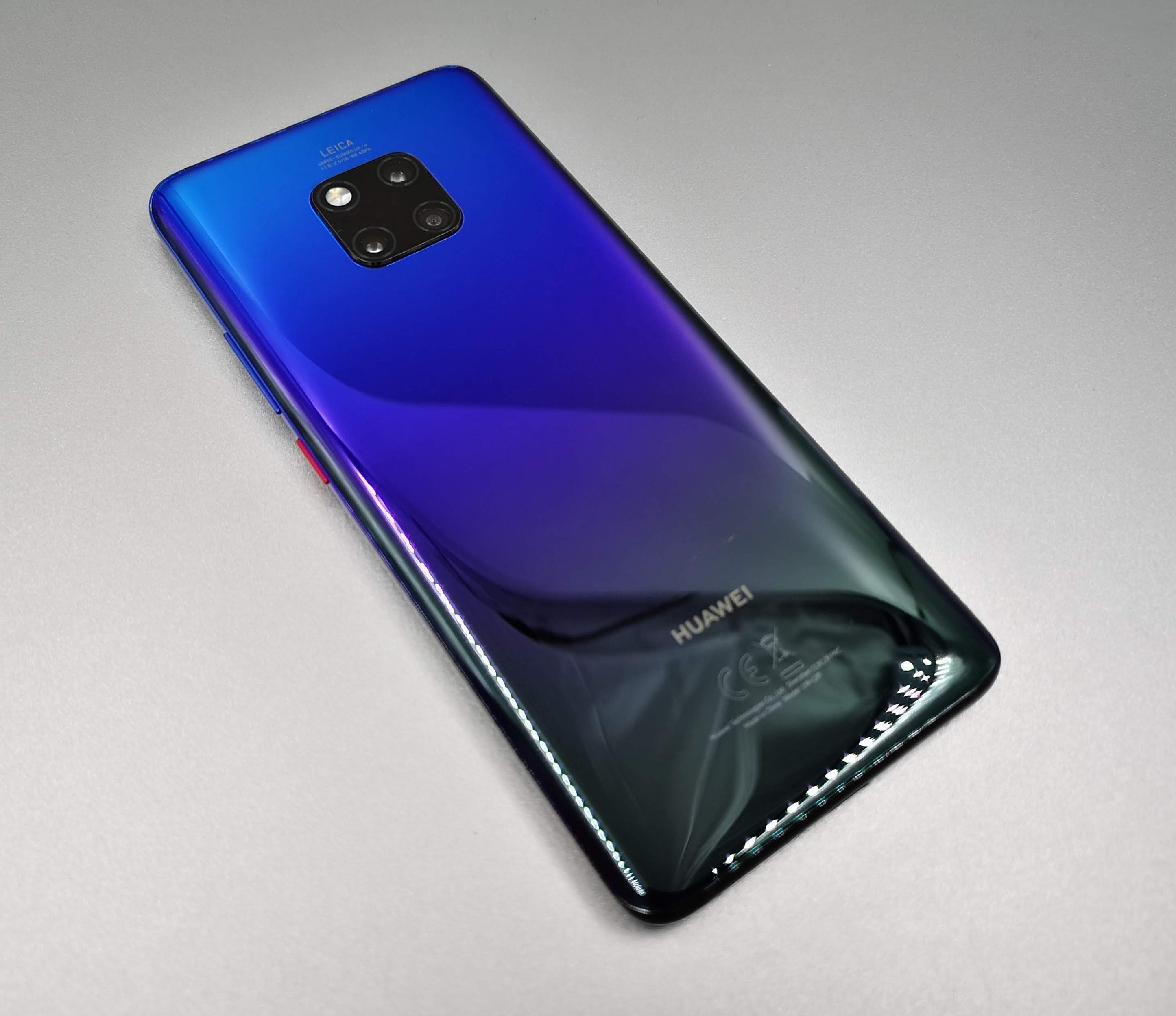
On the front is a 24-megapixel wide f/2.0 sensor for selfies.
Just as Google is now making better use of AI for its camera software, Huawei has upgraded to ‘Advanced Master AI 2.0’ for the latest version of its camera app. It can now detect up to 1500 scenes and scenarios, along with a massive improvement in predictive autofocus.
With such a powerful chipset and two NPUs, Huawei also has a few new camera modes for video recording, with effects applied in real-time. These include fresh, vintage, suspense, portrait bokeh and AI portrait colour.
The phone can even record in a 21:9 ratio for cinema-like recording.
AI portrait colour gives an effect akin to that of Sin City (or for those who remember, the scene with the girl in red in Schindler’s List) but without the need for post-processing in a studio. Instead the video footage starts out in black and white, and once you point at a person the phone will automatically show them, and their clothes, in colour. This has been a feature on still images (albeit usually edited after) but is a first for video on a phone.
Unfortunately while we could test this feature out at the briefing, we were unable to save the footage. But you can be sure of seeing plenty of examples in the near future as reviewers get to play.
- I have already created a new Google Photos gallery for phone owners to add their pictures and video too, as indeed I will myself over the coming days and weeks once I get my own device to test.
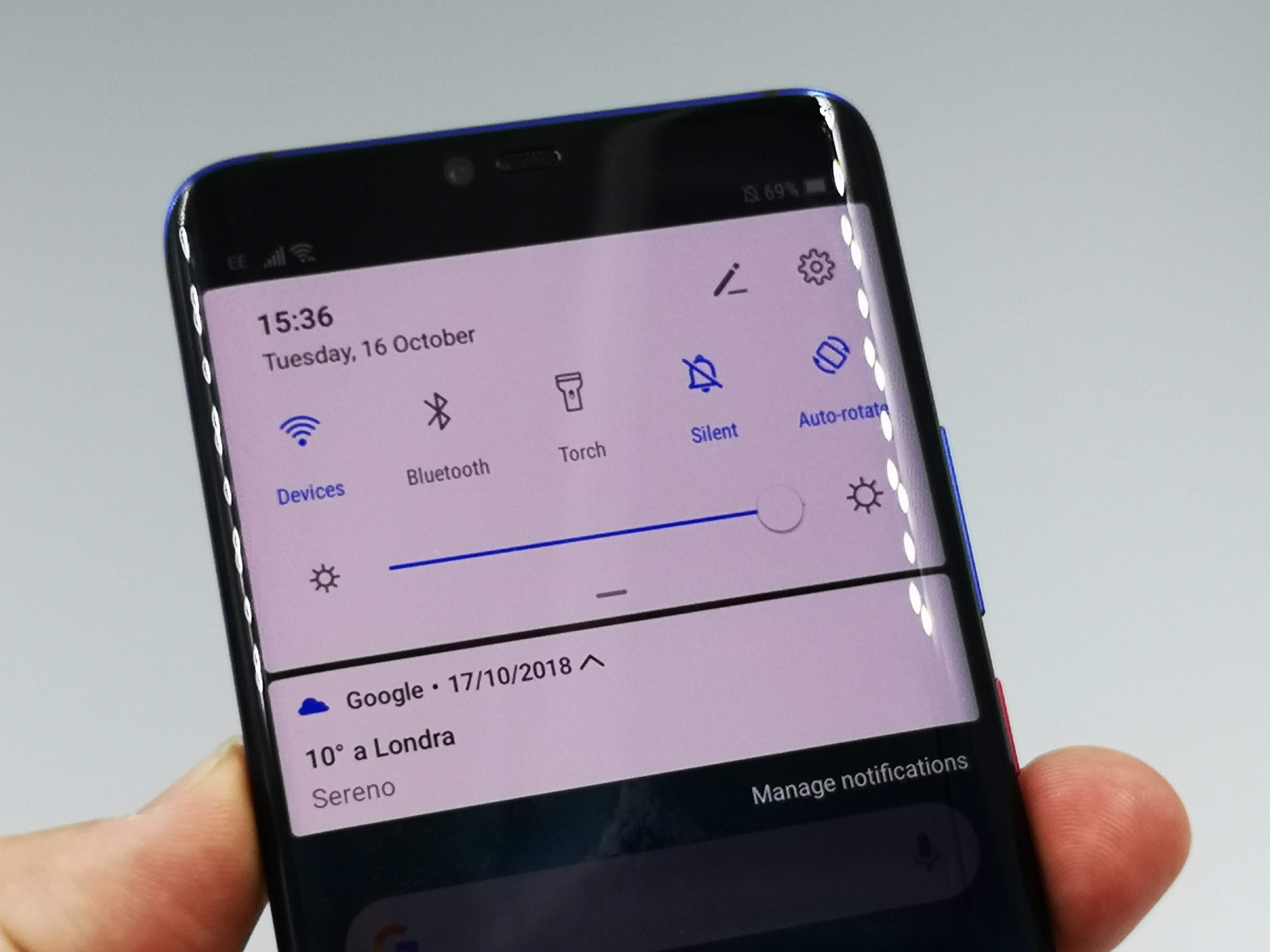
Security Screening
After Huawei announced the Porsche Design Mate RS, many people predicted some of the new features would carry over to the next mainstream device. That’s exactly what has happened, with the curved-edge display, plus an in-glass fingerprint sensor. Huawei says it’s 20% faster to respond that on the Mate RS, but I was unable to test this out on the sample units.
The 6.39-inch curved OLED display has an improved resolution over last year’s Mate 20 Pro, with a 1440×3120 pixel resolution and a 19.5:9 ratio. As ever, you can opt to hide the notch and when done you end up with symmetrical bezels top and bottom that looks nicer when in landscape mode.
Inside the notched area of the display are improved sensors (depth sensing and 3D facial unlocking) to make the facial recognition more reliable and secure, akin to Apple’s implementation of Face ID.
With two forms of security, Huawei has created a password vault to allow you to log in to apps and services by face or fingerprint, rather than remembering passwords.
You can also use it to secure content on your device, which given the fact the phone is designed for business users first and foremost over ‘ordinary’ consumers, also has multiple ways to backup your data – from Huawei’s cloud backup service, a USB connected device, and now a NAS drive using SMB too.

gnigrahc sseleriW
Wireless charging also arrives at long last, and with support for 15W charging too (with the right equipment). That’s good news for Mate 20 Pro users, and also for users of other Qi-compatible phone owners.
That’s because the phone has the world’s first reverse charging feature, allowing you to turn the phone into a wireless charging pad for other devices.
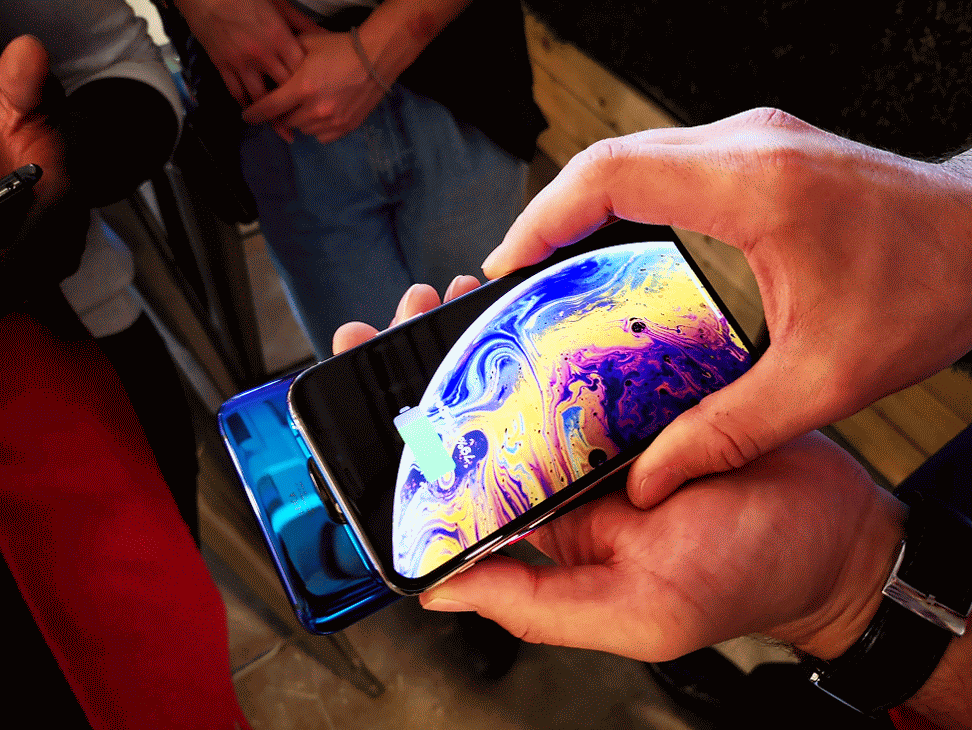
It sounds rather crazy, but already users have had the ability to use the large battery of many Huawei (and Honor) phones to charge other devices via USB-C, so to Huawei it probably made perfect sense.
It just so happens that Huawei had someone on site with an iPhone X to receive a battery top-up as a quick demonstration.
Connectivity
Now that many phone operators in the UK have almost completed the majority of their roll out of sites for 4G, the work going forward is more of things like spectrum refarming, massive MIMO, carrier aggregation and 256QAM encoding.
Even if you don’t understand what all that means, in a nutshell it means greater capacity and speed, plus better service at the cell edges. With many of these upgrades, you’ll need a handset that is able to take advantage.
With a Cat 21 LTE modem, the Mate 20 Pro is extremely capable in this regard, with support for speeds of up to 1.4Gbps. This comes from support for various different configurations to best suit how each operator has configured its network. At the time of writing, I am not aware of any other smartphone on the market offering such speed.
Wi-Fi speed is up too, with support for 802.11ac Wave 2. There’s little point having access to such high speeds if you can’t also get high-speeds over Wi-Fi, especially if you want to run your phone as a portable hotspot to share some of that 4G love with your laptop, tablet or 4K-enabled set top box.

OS and EMUI 9
From day one, the Mate 20 Pro ships with Android Pie, on top of EMUI 9.0. Huawei spoke of the love/hate relationship with Emotion UI over the years, but pointed out that many enhanced features have gone on to become back of the standard Android OS.
At each iteration, it becomes closer to native Android, making it a far cry from the earlier versions that attempted to look more like iOS.
One major change with EMUI 9 over earlier releases is that Huawei has spent a lot of time working to reduce the number of menus, citing a reduction of around 10%. For example, a lot of the display settings now include what was part of the separate Themes app previously.
New software features added to Android Pie are also present here, such as the digital well-being mode that helps you reduce your usage of the phone, or merely access to certain apps. With many people admitting to being addicted to their device, often to the detriment of those around them, you can now allow the phone to moderate your usage, much like parental controls for a child.

AI is then used to further improve the experience by making apps you’re engaging with more responsive, and predicting when apps are likely to be needed so they can launch quicker.
Data within apps can also be shared easier, including the option to print to printer present on the same network.
The desktop mode that offers a Windows-esque working environment has been further enhanced by no longer requiring a USB-C to HDMI cable (although that still works) to operate.
Now you can cast to any compatible display wirelessly, all while still having control of the handset display independently so incoming messages or calls won’t interrupt your wireless presentation or get in the way of your work.
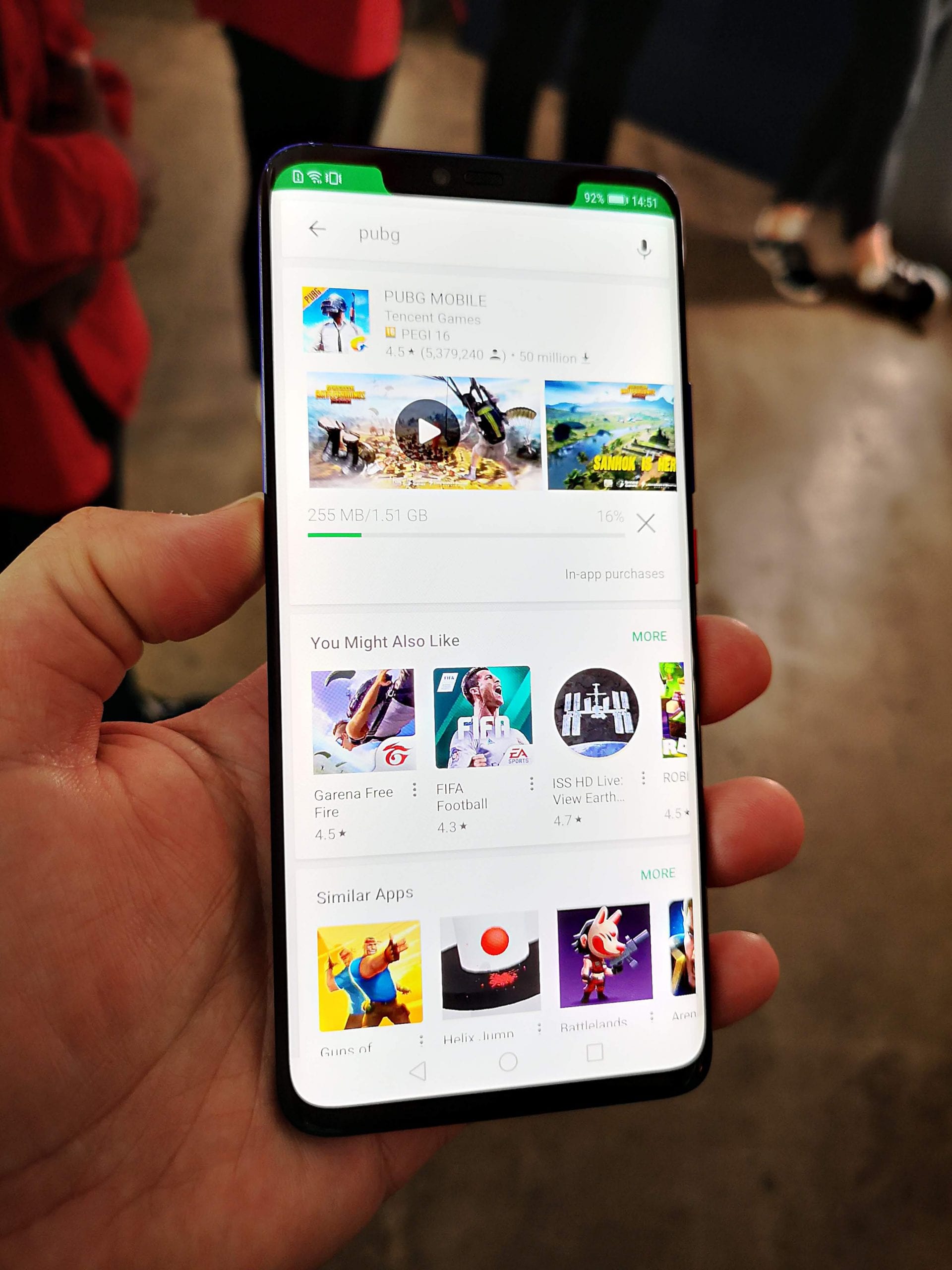
Colours, specs and availability
The Mate 20 Pro will be available in a range of colours, including pink gold, midnight blue, emerald green, twilight, and black. Some colours will feature a vinyl-like textured back, to reduce fingerprints and increase grip. A slightly more subtle design than what Huawei used on some variants of the P10.
In the future, leather-clad variants are not ruled out.

The base model will come with 6GB of RAM and 128GB of internal storage.
There will be a single SIM and dual SIM variant, with the UK likely to be getting the single SIM model. While there was no real mention of memory expandability, it seems the phone can use a new nano-sized memory card in lieu of a second SIM, but details of this were unavailable at the time of writing.
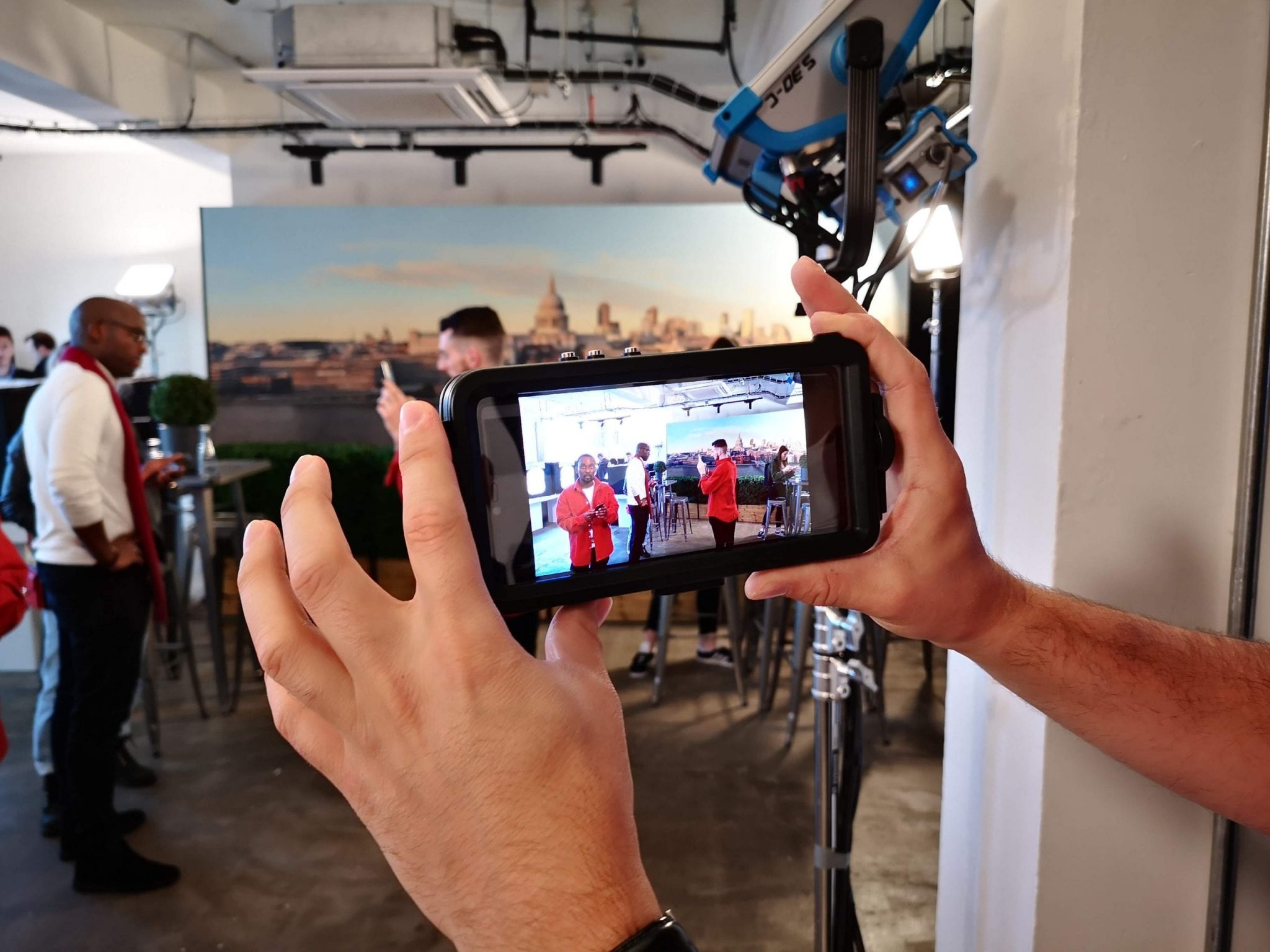
The Mate 20 Pro is also IP68 rated and measures 157.8×72.3×8.6mm. In addition to the phone, there will also be a range of cases, including a waterproof casing to enable the phone to be used at a depth of five metres below water.
Pricing for the Mate 20 Pro wasn’t announced at the briefing, and will be added once announced.
UPDATE: The Mate 20 Pro price is €1049.
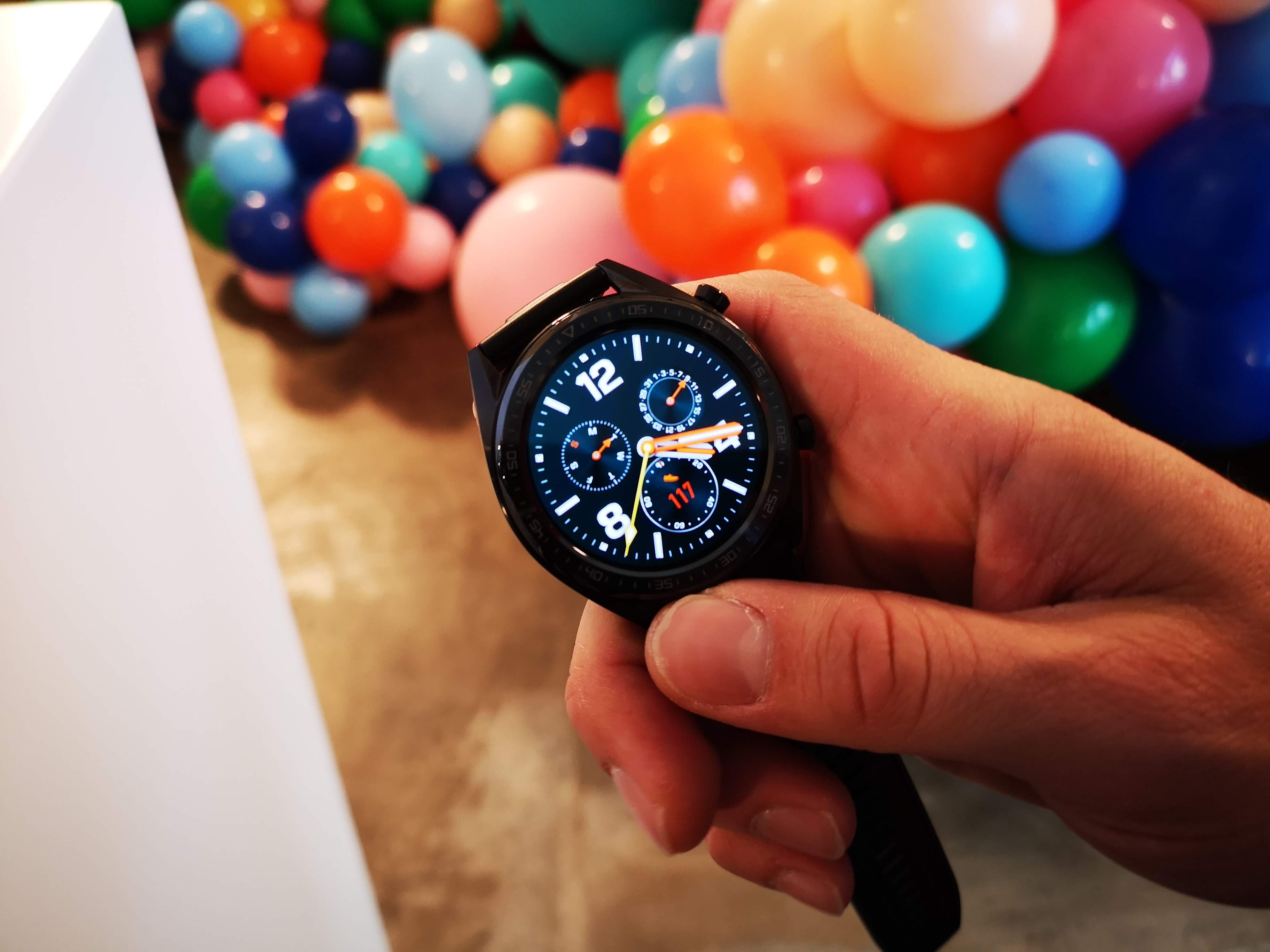
Watch out – there’s more!
Huawei also announced a new watch, after having seemingly given up on the wearables market since the Smart Watch 2 released in early 2017.
The new watch, which will be considerably cheaper than its previous Android/Wear OS models, is primarily aiming itself at the sports market and going after the likes of Fitbit and Garmin.
Its USP is the extra-long battery life, made possible with a chipset that can operate in both high and low-speed mode. In low-speed mode, it uses 1/6th of the power consumption, offering up to 30 day battery life.
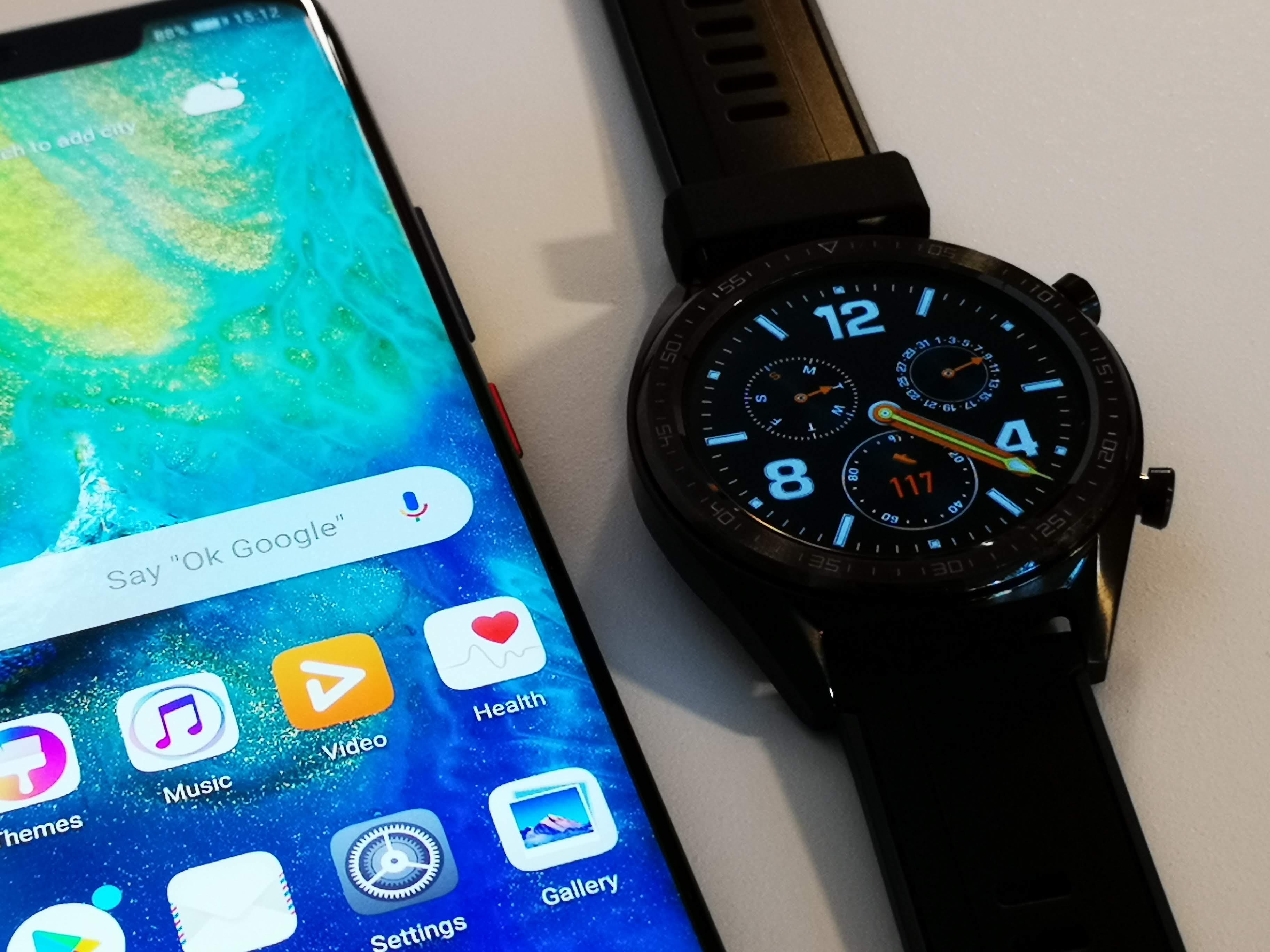
AI is used to understand the context of what you’re doing, so the power saving modes are selected automatically. However, you can opt to enable all the functionality for around 22 hour battery life, or a balanced mode that should get around 14 days between charges.
The watch runs on Huawei’s own Lite OS, so there’s no Wear OS functionality here (nor any support for Google Pay) and there’s no SIM-enabled model either. Instead you have a watch with the largest display Huawei has ever used in a watch (1.39-inch AMOLED) with a diamond-like carbon and ceramic bezel design.
The strap mixes rubber on the inside, with a leather-look outside to make the watch look more like a standard watch, without the issues associated with a real leather strap for a watch used in a gym or when swimming.

Huawei also has six LED sensors for the new V3.0 heart rate monitor, to get an accurate measurement wherever the watch is on your wrist. There’s also GPS and a sleep quality monitor approved by Harvard Medical School, with up to 200 potential suggestions on ways to get better sleep.
There are two models of the Watch GT, with the sport retailing at €199 and the classic for €249. UK pricing will be announced later.
Note: The above is based on a briefing session of around 90 minutes, including about 30 minutes with the phone. This is not a review, although there are first-impression thoughts included based on what I saw, and my existing knowledge of Huawei devices. A full review will follow after I have had sufficient time to use the device in a range of situations, including testing the battery, camera and general functionality.
